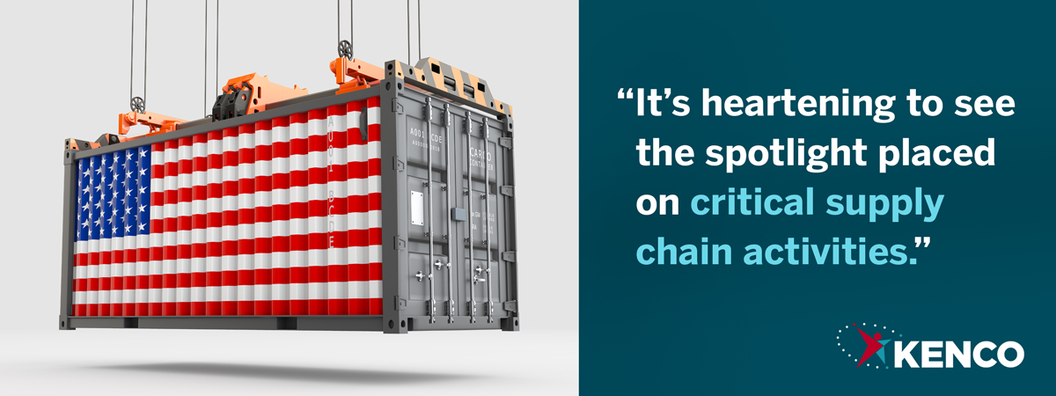
As the White House Council on Supply Chain Resilience convened for the first time last week, a far-reaching list of initiatives was announced to tackle supply chain challenges.
In short, the initiatives will help reduce the risk of another supply chain snarl similar to the COVID-19-induced backup. The administration is launching a new supply chain center within the Department of Commerce to work across agencies and ensure the US’ most critical supply chains continue to build resilience. The president is also invoking the Defense Production Act to move more of the pharmaceutical supply chain stateside, commissioning studies into reducing labor rights abuses and improving sustainability, and growing partnerships with allies to ensure early warnings of potential disruptions.
After taking a deep dive through the administration’s 30 proposed initiatives, we see great potential in many of them – but have questions about others. Here are our thoughts:
The Positives
- Deepening supply chain visibility across public and private sectors. In addition to the cross-department data-sharing initiative spearheaded by the Department of Commerce, the proposal also introduces the Freight Logistics Optimization Works (FLOW) program. Through FLOW, businesses would be able to see data from supply chain networks across the country, allowing for better planning and reducing the chance of a surprise that grinds production to a halt – e.g. a food manufacturer being able to see what ingredients are in short supply, so they can make decisions on how to compensate faster. If we want to avoid another supply chain backup, we must communicate with each other in real-time.
- Addressing risk head-on. The proposal offers a series of activities directly targeted at finding the US’ supply chains' greatest pressure points and improving their resilience. The Supply Chain Resilience Center, at the Department of Homeland Security, will prioritize an analysis of weaknesses at our ports, an important focus following the backups in early-to-mid 2021. Finally, the administration has proposed check-in points with the private sector, launching a Supply Chain and Data Analytics Summit that will offer businesses a chance to give feedback on the government’s risk assessment models.
- Strengthening global collaboration. The proposal includes several initiatives the administration has launched with trade allies: our North American neighbors, but also the European Union, Japan and Korea. Together, these initiatives would ensure all partners are sharing data on the manufacturing of key technology – semiconductors and rechargeable batteries, for example – to help avoid any supply chain disconnects before they ripple across the economy. As we saw during the pandemic, 99 components of a product might be ready for assembly, but all it takes is a shortage of one item to severely delay the process.
The Question Marks
- Ambition is high, but can we juggle every initiative? The administration’s proposals target multiple supply chain complexities – so many in fact, that it will be easy for some initiatives to get left behind. Cross-department initiatives may also get stuck behind red tape, a frustration the supply chain won’t slow down to accommodate. And even if the programs do live up to the administration’s ambitions, keeping track of the data to demonstrate the benefits will be a monumental task. As the administration decides which activities to prioritize, its supply chain summits will become critical touchpoints. Private companies need to come ready with feedback on where the government should focus its resources.
- How long will the data-sharing process take? Any business reliant on a supply chain knows gaining visibility across their own supply chain can be a headache, let alone trying to integrate with their manufacturers and customers. Data exists in silos across the organization, and all of those must be broken down before any real sharing initiatives can begin. It will take plenty of time and resources before the cross-departmental initiatives can be effective.
- How will private businesses respond to “pay for play” programs? The FLOW program, once complete, could be a game-changer for how businesses collaborate across the supply chain. But it also comes with an entry fee: businesses that participate must be willing to make their own data visible, potentially to competitors. Although these types of data-sharing scenarios are starting to trend, especially as rate transparency becomes a more common expectation, some businesses will be skeptical – their market may be small, or their data proprietary. The government will need a robust system for anonymizing data to alleviate these concerns.
A Step in the Right Direction
Although many of these new federal initiatives are just in the planning stages, it’s heartening to see the spotlight placed on critical supply chain activities. We’ll keep our eye on progress. We also encourage you to read through the full list, available here.

